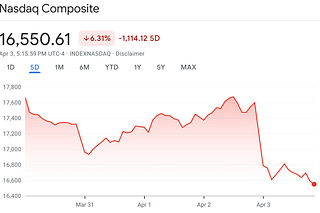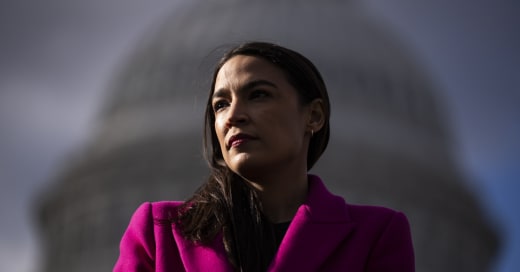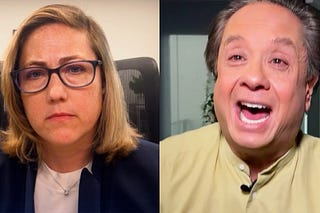
What the Hell Happened to Claremont?
How the once-distinguished conservative think tank plunged into Trumpism, illiberalism, and lying about the election.
Today’s Bulwark has a special piece to which we wanted to draw your attention—a deep dive by Laura K. Field into how the Claremont Institute, once a bastion of academic conservatism dedicated to “the principles of the American Founding,” came to welcome far-right conspiracists, publish “stop the steal” articles, and embrace the most authoritarian aspects of Trumpism.
This is the kind of work The Bulwark is committed to doing, and which only The Bulwark can do. When we started publishing two and a half years ago, we promised to be free from tribalism, and Field’s dissection of Claremont is a great example of what we mean by that.
If you appreciate our perspective and the kind of smart, thoughtful, deeply researched and thoroughly honest journalism exemplified by Field’s article, please consider becoming a Bulwark+ member. For $10/month or $100/year, you’ll get access to more newsletters, podcasts, and live events with Bulwark staff and special guests—plus a community of other members.
We don’t have ads, so we rely on Bulwark+ members to support our work. Our style of journalism will never be the most popular, nor the most profitable, but we believe it’s important. If you agree, join today.
Just before 11 o’clock on the morning of January 6—an hour before President Donald Trump began riling up his “Save America” rally in front of the White House, and two and a half hours before the U.S. Capitol was overrun—Rudy Giuliani spoke to the rallygoers. By his side on the dais stood John C. Eastman, then a law professor at Chapman University and a visiting scholar at the Benson Center for the Study of Western Civilization at the University of Colorado Boulder. Wearing a dark suit with a red striped tie, a red and cream paisley scarf, a camel overcoat, and a brown brimmed hat, Professor Eastman cut a suave figure next to the grimacing man who, two decades and a lifetime ago, had been dubbed America’s Mayor.
According to Giuliani’s introductory remarks, Professor Eastman’s job that day was to explain what had happened the night before in Georgia: “How they [the Democrats] cheated and how it was exactly the same as what they did on November 3rd.” Eastman took to his task with gusto. Chopping the air with his hands, he asserted that dead people had voted and that state election officials had ignored or violated state law. But his main focus was the voting machines. According to Eastman, the “old way” of doing fraud “was to have a bunch of ballots sittin’ in a box under the floor,” but now “they put those ballots in a secret folder in the machines.”From there, Eastman’s theory goes like this: When 99 percent of the vote was in, the Democrats pulled a trick. By this point they knew who had and hadn’t voted, and they knew how many more votes would be needed for Democrats to take the lead in the count. So they paused the counting, took out their stash of electronic ballots, matched each of “those unvoted ballots with an unvoted voter,” and “put them together in the machine,” marked as Democratic votes. “And voila! We have enough votes to barely get over the finish line. We saw it happen in real time last night, and it happened on November 3rd as well!” At one point he elaborated: “You don’t see this on Fox or any of the other stations” but you can see it in “the data.”
Eastman, who had reportedly spent the day before in the Oval Office arguing to Vice President Mike Pence that he had authority to intervene in the counting of the Electoral College vote, ended with an impassioned plea for Pence to allow state legislators to look into these matters, so that “we get to the bottom of it, and the American people know whether we have control of the direction of our government or not.” Eastman became very animated, pumping his fists and yelling:
We no longer live in a self-governing republic if we can’t get the answer to this question! This is bigger than President Trump! It is the very essence of our republican form of government, and it has to be done! And anybody that is not willing to stand up to do it does not deserve to be in the office! It is that simple!
The story of the Claremont Institute is also the story of much of the conservative movement over the last five years. An intellectual tradition that claimed to venerate the Founding Fathers became committed to a would-be authoritarian whose apathy for the Founding is exceeded only by his ignorance of it. The Bulwark exists, in part, to account for how and why. If you value the kind of careful reporting, introspection, analysis, and candor Laura Field brings to her account of the Claremont Institute, please consider becoming a Bulwark+ member.
As wild as this presentation was—with a tenured law professor arguing that the only way to preserve our system of government is for Congress to heed conspiracists—Eastman’s moment was one of the tamer parts of the rally. Everyone knows what followed.
After the mob attack of January 6, Professor Eastman, under pressure, resigned from his faculty position at Chapman University. He was also stripped of his public duties at the University of Colorado Boulder (for which action he is reportedly preparing to sue).
But one place where he is still welcome is the Claremont Institute. Eastman is a senior fellow at the four-decade-old conservative think tank; a member of its board of directors; and the founding director of its Center for Constitutional Jurisprudence, a shingle under which he sporadically files lawsuits and amicus briefs. When Eastman resigned from Chapman, he defended himself in the American Mind, a Claremont web magazine. In Claremont’s flagship publication, the Claremont Review of Books (CRB), one of the institute’s foremost scholars, Charles C. Kesler, defended him in turn. Eastman may be persona non grata at institutions wary of anti-democratic conspiracy theorists, but at the Claremont Institute he fits right in.
Some of the people affiliated with Claremont—like Eastman and much of the CRB crowd—are tenured academics with long careers in the classroom. Others—especially those who form the chorus in the American Mind—are controversialists habituated to today’s right-wing modes of arguing and trolling. People from both categories have spent the past five years giving intellectual succor to Donald Trump. Many of the people associated with Claremont, including several of its most prominent figures, have gone all in for MAGA—some even embracing its most authoritarian, paranoid, and racist strands.
The Claremont Institute used to be one of the principal places for conservative intellectuals to come together. It was founded by scholars who were taken seriously even by people who disagreed with them, and some such scholars still publish in the pages of the CRB. That Claremont has been unparalleled in its intellectual submission to Trumpism should give us pause. After all, in some respects the Claremont crowd is precisely the sort who should have known better: deeply read in political philosophy and history, and familiar with the many warning signs that Trump would be a damaging and divisive president. There is also a sense, however, in which the Claremont crowd’s submission to Trump was the most predictable thing in the world—the simple culmination of a political theory rooted in jingoism and denial.
Either way, the story of Claremont’s embrace of Trumpism is a long and complicated one. But with Claremont growing—arguably in influence and certainly institutionally—and with Trump-style politics continuing to dominate American conservatism, even six months after the violent attack on the seat of government, understanding what happened at Claremont is more than just an interesting case study in the time-wornproblem of wannabe tyrants and intellectual subversion to power. What happened at Claremont is also of serious practical concern for anyone interested in the democratic future of the country.
The Claremont Institute was founded in 1979 by Peter W. Schramm, Thomas B. Silver, Christopher Flannery, and Larry P. Arnn, all students of Lincoln scholar Harry V. Jaffa. (Despite the shared name and many overlapping personnel, the Claremont Institute has no formal affiliation with Claremont McKenna College and the other Claremont colleges, which are reputable institutions of higher learning.) Jaffa’s work on Abraham Lincoln was groundbreaking, and can be credited for recovering a sense of Lincoln’s intellectual seriousness, the depth and magnitude of his person, and his extraordinary political capabilities. A student of the political theorist Leo Strauss, Jaffa is also considered the founder of the so-called “West Coast Straussian” school of thought (full disclosure: while pursuing my doctorate in political theory and public law from the University of Texas at Austin, I studied with so-called “East Coast Straussians”). Whereas Strauss is known for a revival of the natural right tradition that includes its many attendant challenges and perplexities, West Coast Straussians tend to embrace natural right as settled truth. Jaffa and his students further insist that the American Founders were able to bring ancient political thought and Judeo-Christian thinking into a fruitful type of coexistence (one scholar playfully refers to Jaffa as achieving a synthesis of “Athens, Jerusalem, and Peoria”). In addition to elevating Lincoln, West Coast Straussians are singular in their attachment to the American Founding and the Founding Fathers, both of which, for them, represent something truly unparalleled and exemplary in the political history of the world: a modern, constitutional, popular government built upon the high ideals of liberty and virtue.
The flipside of the group’s attachment to their heroic American forebears and to (what they view as) American principles of natural right is an overwhelming distrust of anything that smacks of (what they view as) Hegelian historicism or statism. The idea that principles or truth might have a historical, changing, or perspectival character is anathema to the thinkers at Claremont, who have long stood in defiance of both “the living Constitution” and the “administrative state.”
Today, the Claremont Institute describes itself as dedicated to the restoration of “the principles of the American Founding to their rightful, preeminent authority in our national life.” And the organization’s orientation is fundamentally anti-wonk: “Rather than concentrate on policy like many other think tanks, the Claremont Institute teaches the principles and ideas that shape policy over time.” This is a group with grand, culture-shaping ambitions:
The Claremont Institute provides the missing argument in the battle to win public sentiment by teaching and promoting the philosophical reasoning that is the foundation of limited government and the statesmanship required to bring that reasoning into practice.
In keeping with these lofty goals, the organization runs a number of programs and fellowships for educating “the best and most promising young writers, lawyers, activists, academics, entrepreneurs, and public servants.” Hundreds of journalists and thinkers have passed through Claremont’s Publius, Lincoln, John Marshall, and speechwriter programs. Some very smart and thoughtful people—like Ross Douthat—have been fellows at the institute; so have Josh Hammer, Mollie Hemingway, Christopher Rufo, and Ben Shapiro.
An indication of where things stand today: In 2019, Claremont welcomed as a Lincoln Fellow the conspiracist and “king of fake news” Jack Michael Posobiec III. Posobiec, already well known as a promoter of the Pizzagate hoax and the Seth Rich conspiracy theory, was then working as a correspondent and host for the One America News Network (OANN), which became one of the major promoters of false claims about the 2020 election. Claremont remains proud of the affiliation with Posobiec, with an institute official recently calling him “one of the best public political voices in America”—just days before it was revealed that a right-wing website Posobiec frequently promoted was a Russian disinformation project.
And among the latest crop of Lincoln Fellows is Charlie Kirk, the founder of the right-wing youth-mobilizing group Turning Point USA. Kirk bragged about sending “80+ buses full of patriots to DC to fight” for Trump on January 6. After his slimy “Falkirk Center,” co-founded with Jerry Falwell Jr., imploded, Kirk was ousted from Liberty University. The Claremont Institute has welcomed him with open arms.
The institute’s best-known scholar is Michael Anton, author of the infamous “Flight 93 Election” essay. The essay, published pseudonymously on the CRB website, provided a rare intellectual defense of Trump and was promoted by Rush Limbaugh in the months leading up to November 2016. Its premise was that Democrats posed a threat to the country analogous to the 9/11 terrorists, and that the election of Hillary Clinton would mean certain death for America (“a Hillary Clinton presidency is Russian Roulette with a semi-auto. With Trump, at least you can spin the cylinder and take your chances”). After the election, Anton spent a little over a year in the Trump White House, but when that didn’t pan out, he joined the Claremont Institute (which, in addition to Hillsdale College, he described as his “first love and second family”). Now a Claremont senior fellow and a lecturer at Hillsdale’s Kirby Center in Washington, D.C., Anton helped to propagate Trump’s “stop the steal” campaign last year.
Anton and others at Claremont were intellectual cheerleaders for Trump, and so Trump returned the favor. He tweeted out praise for Anton’s 2019 book, an expanded version of the “Flight 93” essay. He awarded the institute a National Humanities Medal. He appointed the former president of Claremont, Michael Pack, to head U.S. global media, with scandalous results. He put CRB editor Charles Kesler and Claremont cofounder (and Hillsdale president) Larry Arnn on the controversial 1776 Commission.
Trump is out of office now, but the Claremont Institute is still going strong. Earlier this year Claremont opened a new office in Washington called the Center for the American Way of Life. (More about that later.) All in all, today the institute appears to be in a stronger political position than ever, despite—or because of—the fact that people affiliated with it have peddled the kind of lies and conspiratorial thinking that eat away at reasoned discourse and sound republican judgment. It’s worth taking a much closer look at what they’ve been up to.
In what follows, I begin in the present, with Charles Kesler’s halfhearted effort to distance himself from Trump in the aftermath of January 6. I then turn to discuss the institute’s involvement in developing and perpetuating Trump’s post-election lies. I follow this with a brief treatment of the group’s shameful indulgence of extreme rhetoric, fringe individuals, and white supremacy, all of which are inseparable from Claremont’s blinkered account of 1776. . . .
If you’ve read this far, I highly recommend clicking through and reading the rest of the piece—you can find it here. There’s also a PDF version. And I also recommend joining Bulwark+. Our members’ generosity allows us to publish great pieces like this, in addition to the newsletters and podcasts we put out every day for free. In addition to the special benefits Bulwark+ members receive—more newsletters, podcasts, and live events with Bulwark staff and special guests—they also get the satisfaction of knowing they helped us keep the lights on and carry our mission forward.









